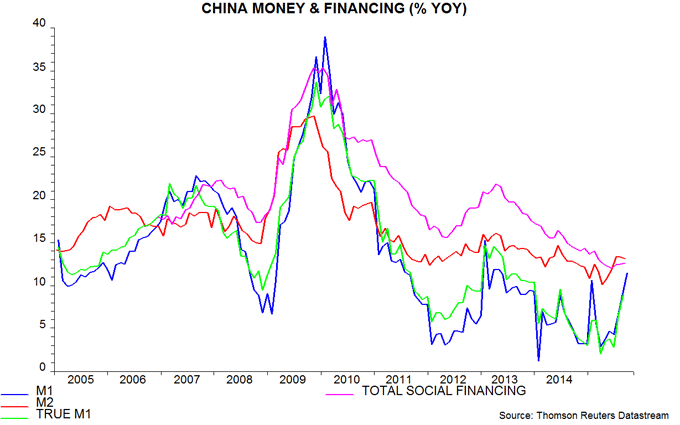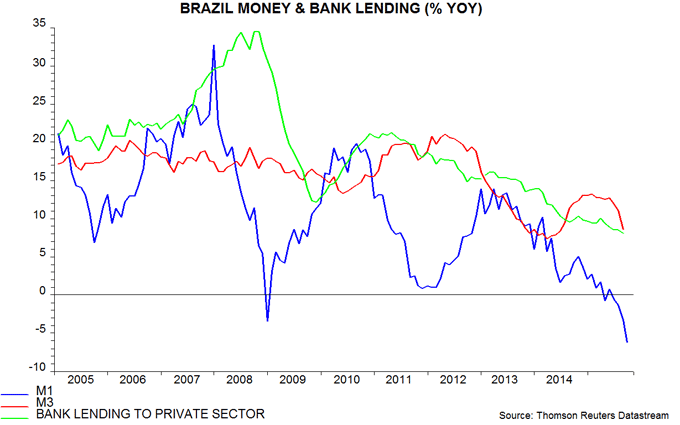A tale of two EMs
Chinese money and credit numbers for September indicate that economic prospects continue to improve. Brazilian numbers give the opposite message.
Two features, in particular, of the Chinese data warrant increased optimism. First, annual growth in narrow money M1 rose further to 11.4%, the fastest since April 2013 – see first chart. Secondly, growth in the total stock of financing to non-financial enterprises and households held steady at 12.5%, up from a recent low of 11.9% in June. The recent stabilisation / reversal in financing growth suggests that the “credit impulse” is turning positive, undermining a key strand of the bearish case.
The preferred Chinese money measure here is “true” M1, which adds household demand deposits to the official M1 aggregate. A September number for demand deposits is not yet available, but a further rise in annual true M1 growth is highly likely, based on the official M1 number.
By contrast, the annual change in Brazilian M1 dived deeper into negative territory in September, reaching -6.2%, considerably worse than a -3.5% low during the 2008-09 recession. Inflation, moreover, is much higher now than then: real (i.e. consumer price-deflated) M1 contracted by 14.3% in the latest 12 months.
Growth in the broader M3 measure, meanwhile, has fallen sharply, while bank lending continues to decelerate – the credit impulse is certainly still negative in Brazil.
The consensus view seems to be that the Chinese authorities should ease monetary policy further, while their Brazilian counterparts must maintain high rates until inflation subsides. Money trends argue the opposite. The Chinese M1 surge is evidence that policy is already sufficiently, and possibly excessively, stimulative. The monetary carnage in Brazil, by contrast, signals that inflation will collapse as soon as the exchange rate stabilises. An immediate rate cut is warranted and could trigger a currency rally, by stemming capital outflows associated with fear of a prolonged economic slump.



Reader Comments